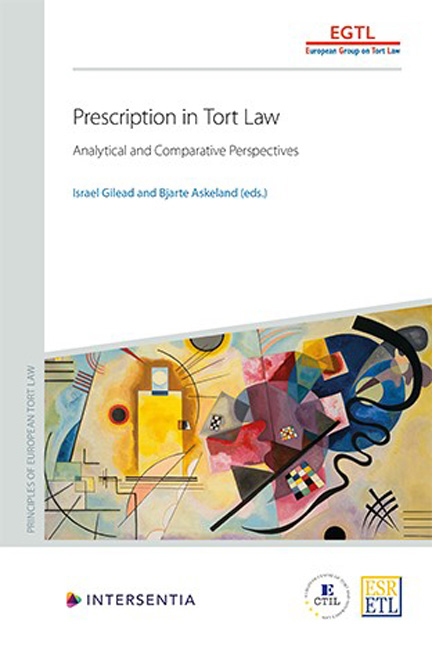Book contents
- Frontmatter
- Dedication
- Acknowledgements
- Contents
- List of Authors
- PART I THEORETICAL AND COMPARATIVE ANALYSES
- Analytical and Comparative Report
- Economic Analysis
- PART II PRESCRIPTION IN TORT LAW OUTLINED
- Case Scenarios
- Austria
- Belgium
- Czech Republic
- England and Wales
- France
- Germany
- Greece
- Italy
- The Netherlands
- Norway
- Poland
- South Africa
- Spain
- Switzerland
- United States
- European Union
- Appendix: Questionnaire
- About the Editors
Analytical and Comparative Report
Published online by Cambridge University Press: 22 December 2020
- Frontmatter
- Dedication
- Acknowledgements
- Contents
- List of Authors
- PART I THEORETICAL AND COMPARATIVE ANALYSES
- Analytical and Comparative Report
- Economic Analysis
- PART II PRESCRIPTION IN TORT LAW OUTLINED
- Case Scenarios
- Austria
- Belgium
- Czech Republic
- England and Wales
- France
- Germany
- Greece
- Italy
- The Netherlands
- Norway
- Poland
- South Africa
- Spain
- Switzerland
- United States
- European Union
- Appendix: Questionnaire
- About the Editors
Summary
INTRODUCTION
This project of the European Group on Tort Law (EGTL) aims to explore how the passage of time on a tort law claim can affect, actually affects and should affect, through the defence of prescription (limitation of actions), the claim, the parties (plaintiff P and defendant D) and other parties. For the purpose of this project, claims for professional malpractice, although considered as contractual claims in some jurisdictions, are treated as tort claims to the extent that they are based on grounds of tortious conduct (such as breach of a standard of care).
Notably, this report focuses on the general law of prescription of tort liability. Special rules of prescription that apply to specific contexts, such as prescription in cases of sexual abuse, prescription under European Council Directives and their national implementations, or of tort claims for harms caused by atomic installations, are discussed, when relevant, only in the national reports and the European Union report. It is also emphasised that this project does not discuss legal arrangements under which rights (such as legal powers) exist from the outset for a limited period of time after which they expire‘from the inside‘rather than by the operation of prescription law. Neither does it discuss acquisitive prescription as a way to acquire property rights in immovable and movables.
The discussion of each of the following topics starts with a theoretical analysis, based on the first round of EGTL discussions, and then proceeds to a comparative report and its conclusions, based on the second round of EGTL discussions. It should be emphasised, though, that the analysis, the observations and the suggestions made in this report, as well as the final conclusions (Section XIII) reflect the views of the authors and not of the EGTL.
DEFINITION OF PRESCRIPTION
Prescription in tort law is a legal institution that prevents the plaintiff (P) from enforcing a tort claim against the defendant (D) because of P's failure to file an action on the claim during the running of a specified period of time on the claim.
- Type
- Chapter
- Information
- Prescription in Tort LawAnalytical and Comparative Perspectives, pp. 3 - 122Publisher: IntersentiaPrint publication year: 2020



